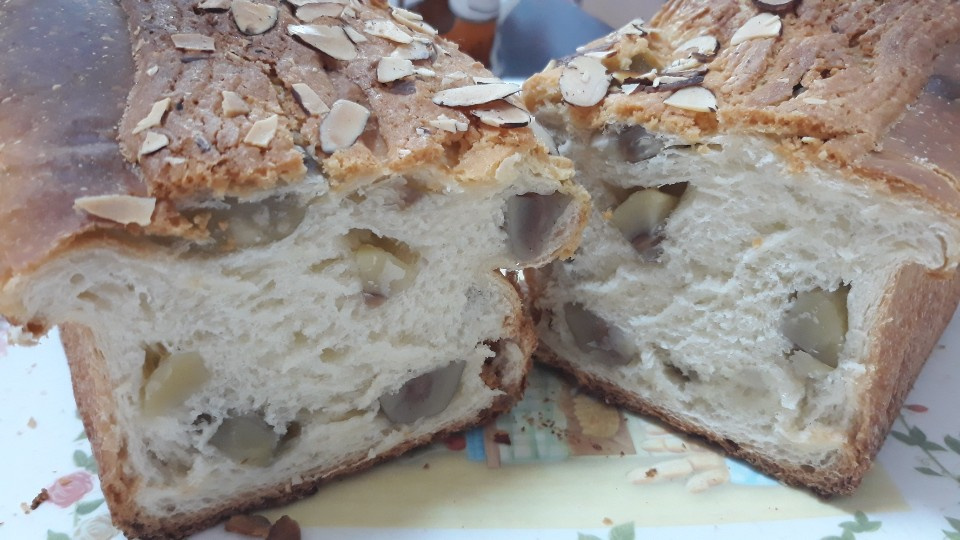
You can't stop eating chestnut bread! It's low-temperature ripen
I really like bread, but I prefer making it to eating it.
I bought an oven recently, so I should bake some bread It's a night of potato chips in the car!!
The desire to make and store canned chestnut bread by hand soaredHaha
Eventually, we started cooking chestnuts, and once we touched them, people like us couldn't let go.(laughs)
I'm going to cook chestnuts, knead them, ferment them to low temperatures...and eventually made chestnut bread^^
It's been a while since I've done it, so I'm so proud of course.Hahaha
I think almost everyone likes chestnut bread.
It's fun to catch me once and bake with the kids,
Even if the result is ruined, it'll taste good, so you'll be satisfied.
Experience how delicious freshly baked bread tastes~^^
6 serving
Within 999 minutes

쉬운언니
- Ingredients
-
-
Strong flour720g
-
Gravity powder180g
-
Water470g
-
Dry East20g
-
Baking improvement system9g
-
Sugar100g
-
Butter72g
-
skimmed milk powder27g
-
Eggs90g
-
Salt18g
-
Butter75g
-
Sugar55g
-
Baking powder2g
-
egg50g
-
Gravity powder75g
-
an almond slice40g
-
Night-dise350g
-
Night500g
-
Sugar1cup
-
Starch syrup1/2cup
-
Salt1little
-
- Cooking Steps
-
STEP 1/16First, measure all ingredients except yeast among the ingredients for dough and put them in a bowl.
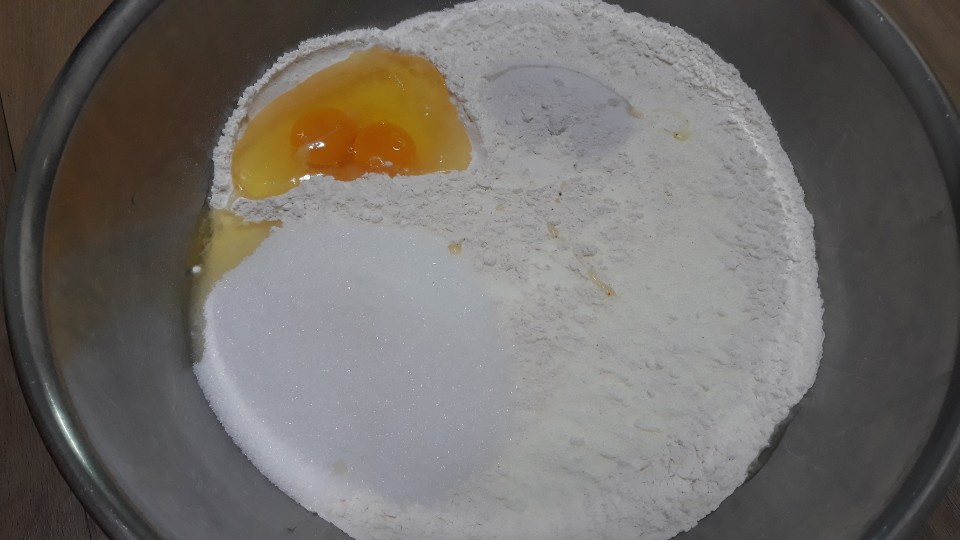 STEP 2/16Dry yeast doesn't matter if you pour a small amount of water on top of flour separately from salt and sugar, but it ferments quickly when used in slightly lukewarm water (about 30 degrees), so put it in water, stir it well, and pour it toward flour to knead it.
STEP 2/16Dry yeast doesn't matter if you pour a small amount of water on top of flour separately from salt and sugar, but it ferments quickly when used in slightly lukewarm water (about 30 degrees), so put it in water, stir it well, and pour it toward flour to knead it.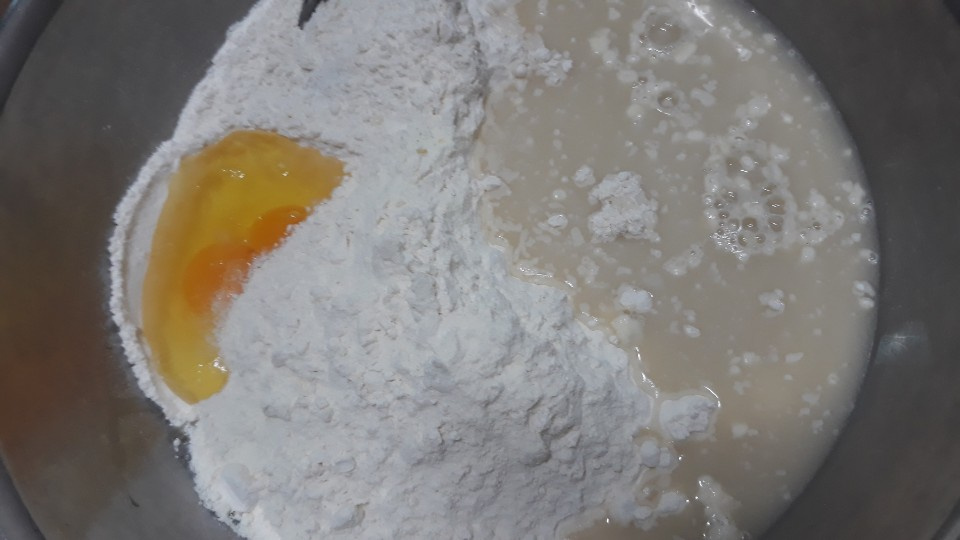 STEP 3/16If all dough ingredients except butter are put together, mix with a kneader until no raw powder is visible. When the powder is completely mixed, add butter and turn it for 8 to 12 minutes to hold the gluten to 100%.
STEP 3/16If all dough ingredients except butter are put together, mix with a kneader until no raw powder is visible. When the powder is completely mixed, add butter and turn it for 8 to 12 minutes to hold the gluten to 100%.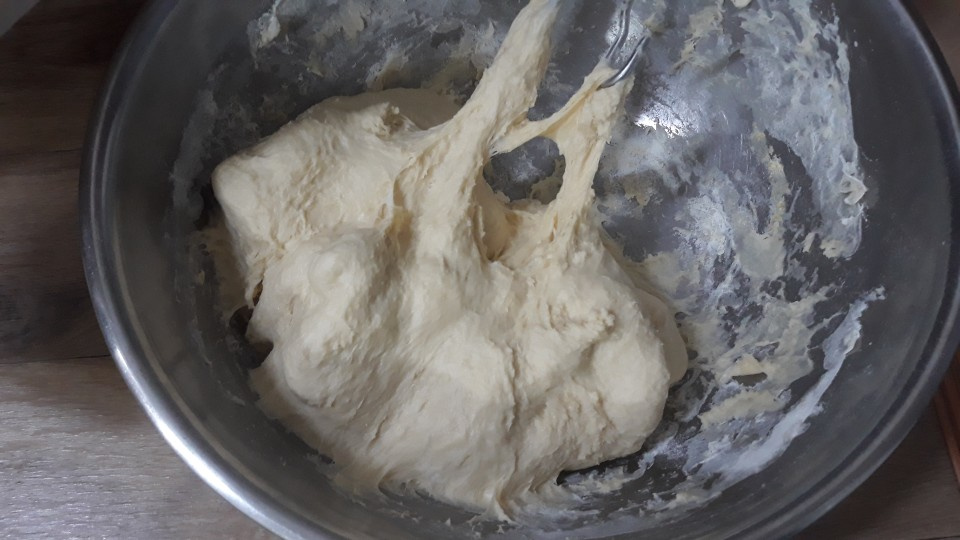 STEP 4/16To check if the gluten is well caught, turn the dough for about 10 minutes and stretch it out, and if your fingers are stretched thin enough to show, the gluten is formed well.
STEP 4/16To check if the gluten is well caught, turn the dough for about 10 minutes and stretch it out, and if your fingers are stretched thin enough to show, the gluten is formed well. STEP 5/16Place the dough in a new bowl, wrap it, and ferment it.
STEP 5/16Place the dough in a new bowl, wrap it, and ferment it.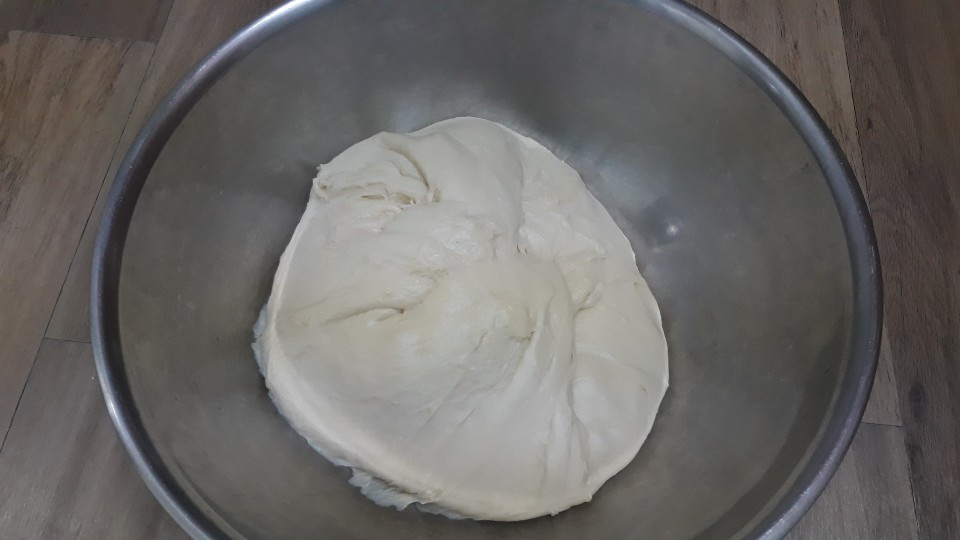 STEP 6/16As shown in the picture, it is well fermented if it swells three times and stays in the shape of a finger when stabbed by hand, or if there is a thread like a thread when the dough is lifted.
STEP 6/16As shown in the picture, it is well fermented if it swells three times and stays in the shape of a finger when stabbed by hand, or if there is a thread like a thread when the dough is lifted.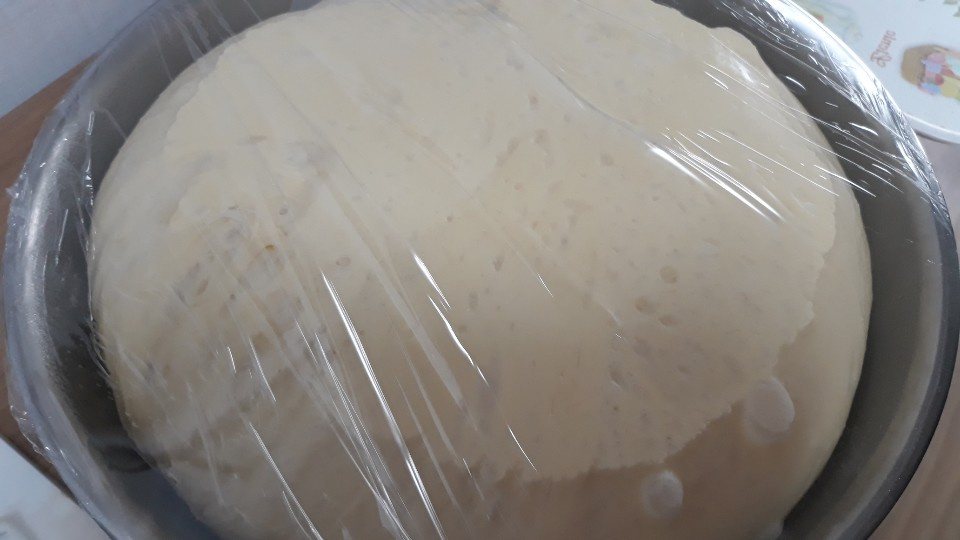 STEP 7/16Sprinkle powder on the dough, divide it into 450g, and roll it in a circle and roll it.
STEP 7/16Sprinkle powder on the dough, divide it into 450g, and roll it in a circle and roll it.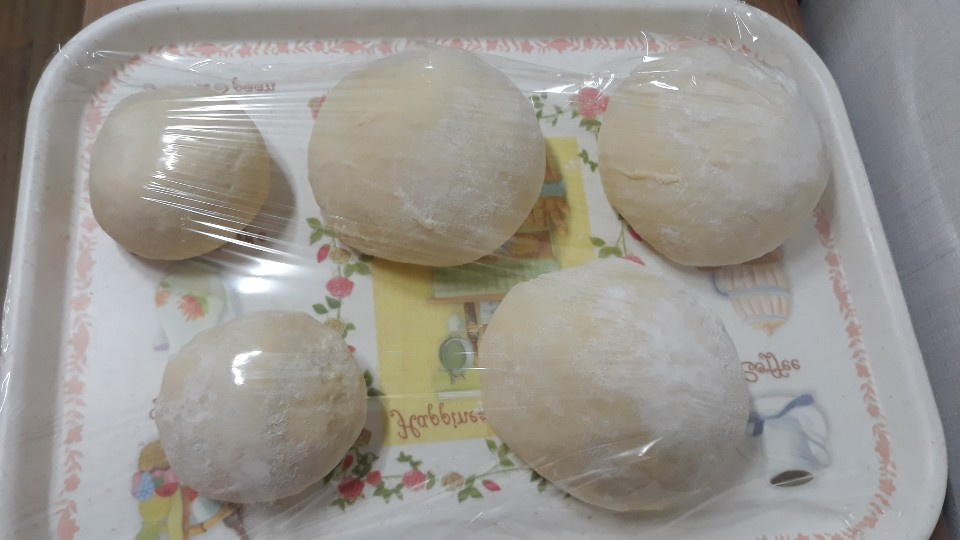 STEP 8/16After the intermediate fermentation, spread the dough widely with a rolling pin and top it with chestnuts.
STEP 8/16After the intermediate fermentation, spread the dough widely with a rolling pin and top it with chestnuts.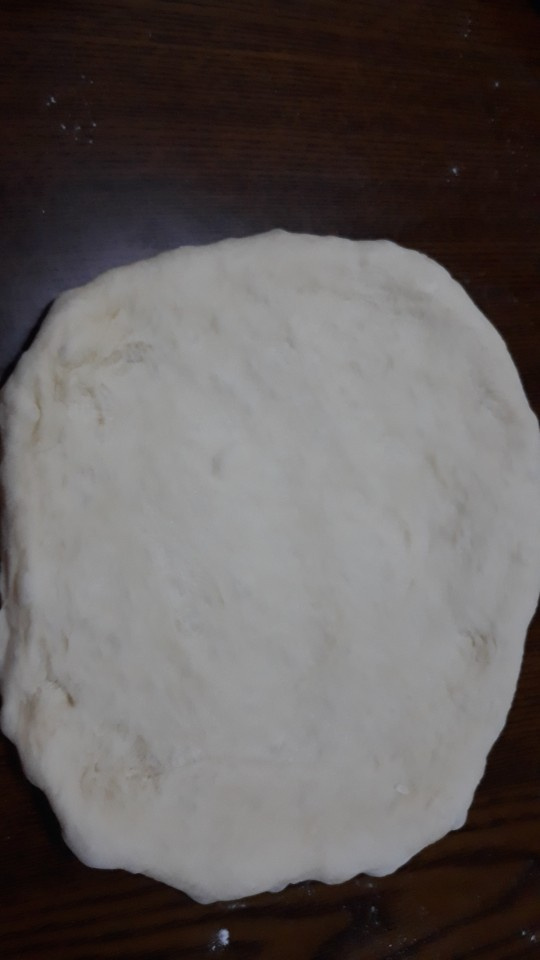 STEP 9/16After putting chestnuts on top, pull the dough slightly and roll it. At this time, chestnuts should not be concentrated on one side, and chestnuts should not be spread evenly so that chestnuts can be evenly embedded in bread.
STEP 9/16After putting chestnuts on top, pull the dough slightly and roll it. At this time, chestnuts should not be concentrated on one side, and chestnuts should not be spread evenly so that chestnuts can be evenly embedded in bread.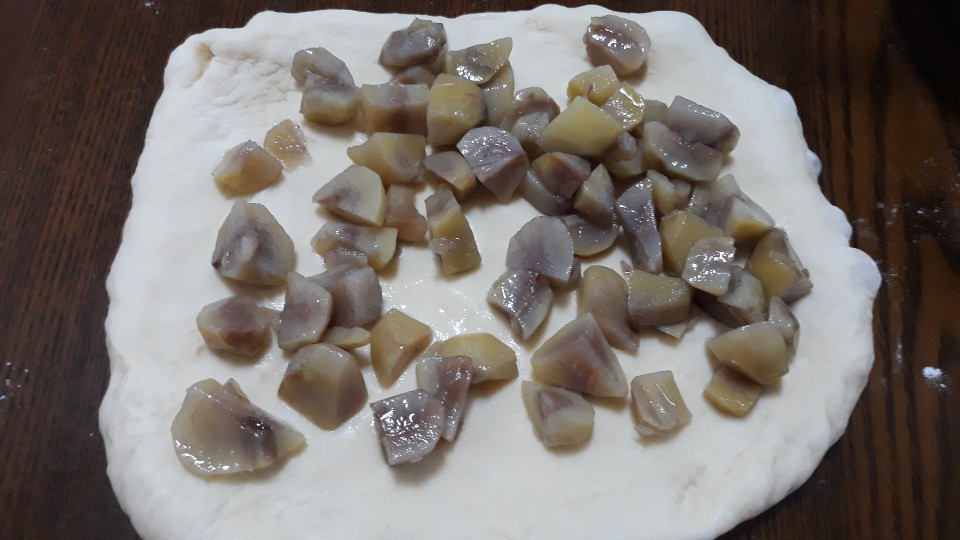 STEP 10/16Add chestnuts and roll the dough until it is pressed at the end. Place in pan with the side attached to the pinch facing the floor.
STEP 10/16Add chestnuts and roll the dough until it is pressed at the end. Place in pan with the side attached to the pinch facing the floor.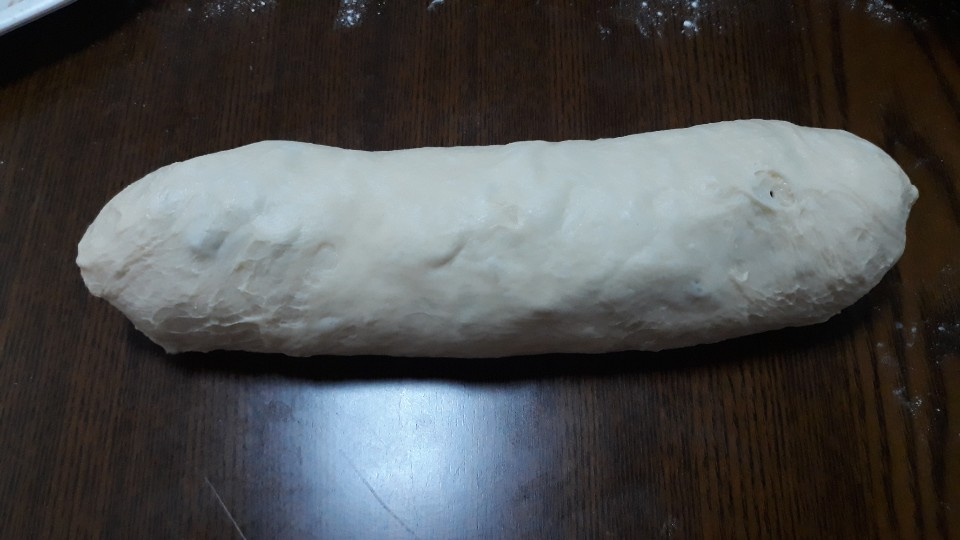 STEP 11/16Making dough for toppings
STEP 11/16Making dough for toppings
Mix the butter (room temperature) and sugar in the topping dough to make it ivory-colored, then add eggs and mix. When the dough is mixed smoothly, put the filled powder ingredients together, mix them together, knead them, and put them in a piping bag. STEP 12/16Put chestnuts in a pound mold, put the dough in a roll, squeeze three rows of topping dough on the top, and decorate it with almond slice.
STEP 12/16Put chestnuts in a pound mold, put the dough in a roll, squeeze three rows of topping dough on the top, and decorate it with almond slice. STEP 13/16If you want to use a small pound mold, a dough of about 180g per piece is enough. When the pound frame is insufficient or there is no frame, roll 180g in a disposable foil container.
STEP 13/16If you want to use a small pound mold, a dough of about 180g per piece is enough. When the pound frame is insufficient or there is no frame, roll 180g in a disposable foil container.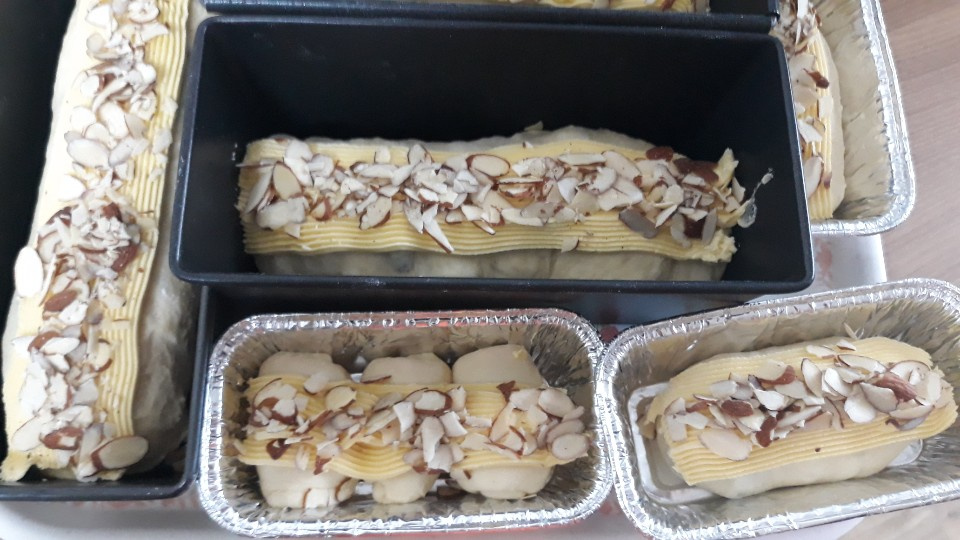 STEP 14/16Put the dough in each mold, add it to the topping, and put it in the fermentation chamber for the second fermentation.
STEP 14/16Put the dough in each mold, add it to the topping, and put it in the fermentation chamber for the second fermentation.
It is recommended to take out the secondary fermentation when it comes up to 1 cm below the mold.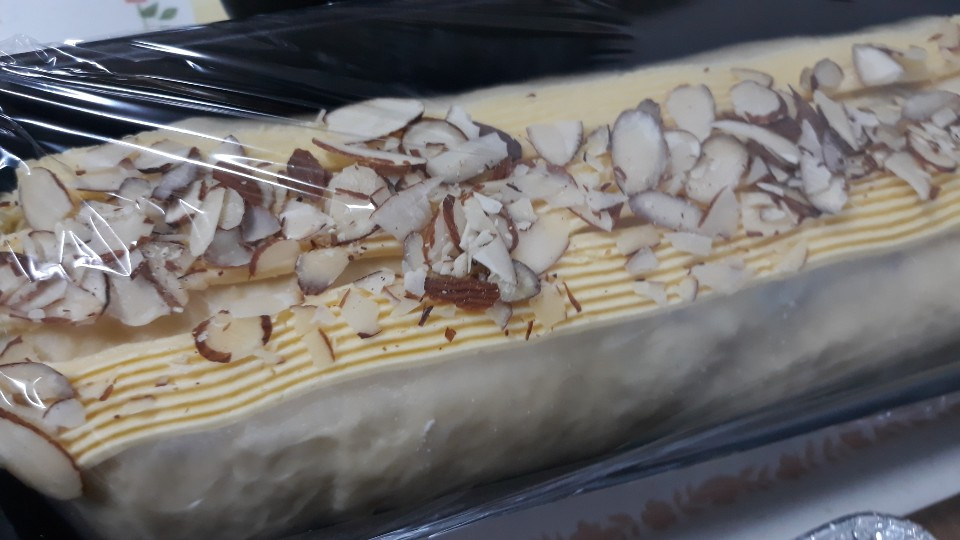 STEP 15/16Preheat the oven to 175 degrees and bake for 30 minutes.
STEP 15/16Preheat the oven to 175 degrees and bake for 30 minutes. STEP 16/16If the bread comes out of the bread mold easily, the insides are ripe, so wear gloves, turn the mold upside down, take out the bread, and bake it for another 5 minutes if it doesn't come out well.
STEP 16/16If the bread comes out of the bread mold easily, the insides are ripe, so wear gloves, turn the mold upside down, take out the bread, and bake it for another 5 minutes if it doesn't come out well.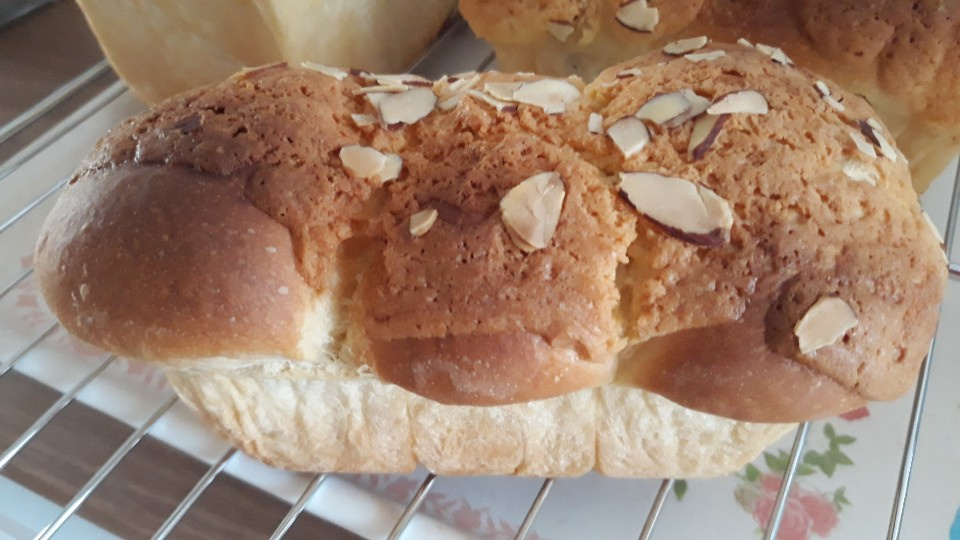 You can knead the toppings with a soboro and put them on top. When you put in chestnuts, use a sieve to pour out the soup
You can knead the toppings with a soboro and put them on top. When you put in chestnuts, use a sieve to pour out the soup
- Japchae Recommended recipe
-
-
1
 Meatless japchae (paprika japchae with only vegetables)4.88(16)
Meatless japchae (paprika japchae with only vegetables)4.88(16) -
2
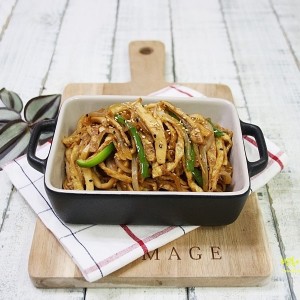 Texture gangster fish cake japchae / stir-fried fish cake4.92(12)
Texture gangster fish cake japchae / stir-fried fish cake4.92(12) -
3
 How to make bean sprout japchae4.97(30)
How to make bean sprout japchae4.97(30) -
4
 Chives and japchae4.88(26)
Chives and japchae4.88(26)
-
- chicken Recommended recipe
-
-
1
 Making Grilled Seasoned Chicken Without Oven4.92(13)
Making Grilled Seasoned Chicken Without Oven4.92(13) -
2
 Imitating ZICOBA chicken 100%4.93(261)
Imitating ZICOBA chicken 100%4.93(261) -
3
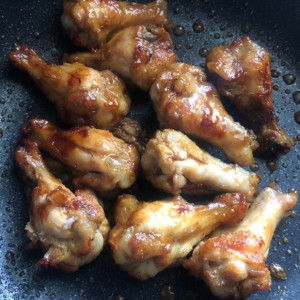 Making wingbong soy sauce chicken5.00(11)
Making wingbong soy sauce chicken5.00(11) -
4
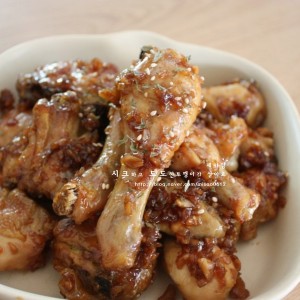 Grilled garlic chicken. Mom's garlic chicken4.83(35)
Grilled garlic chicken. Mom's garlic chicken4.83(35)
-